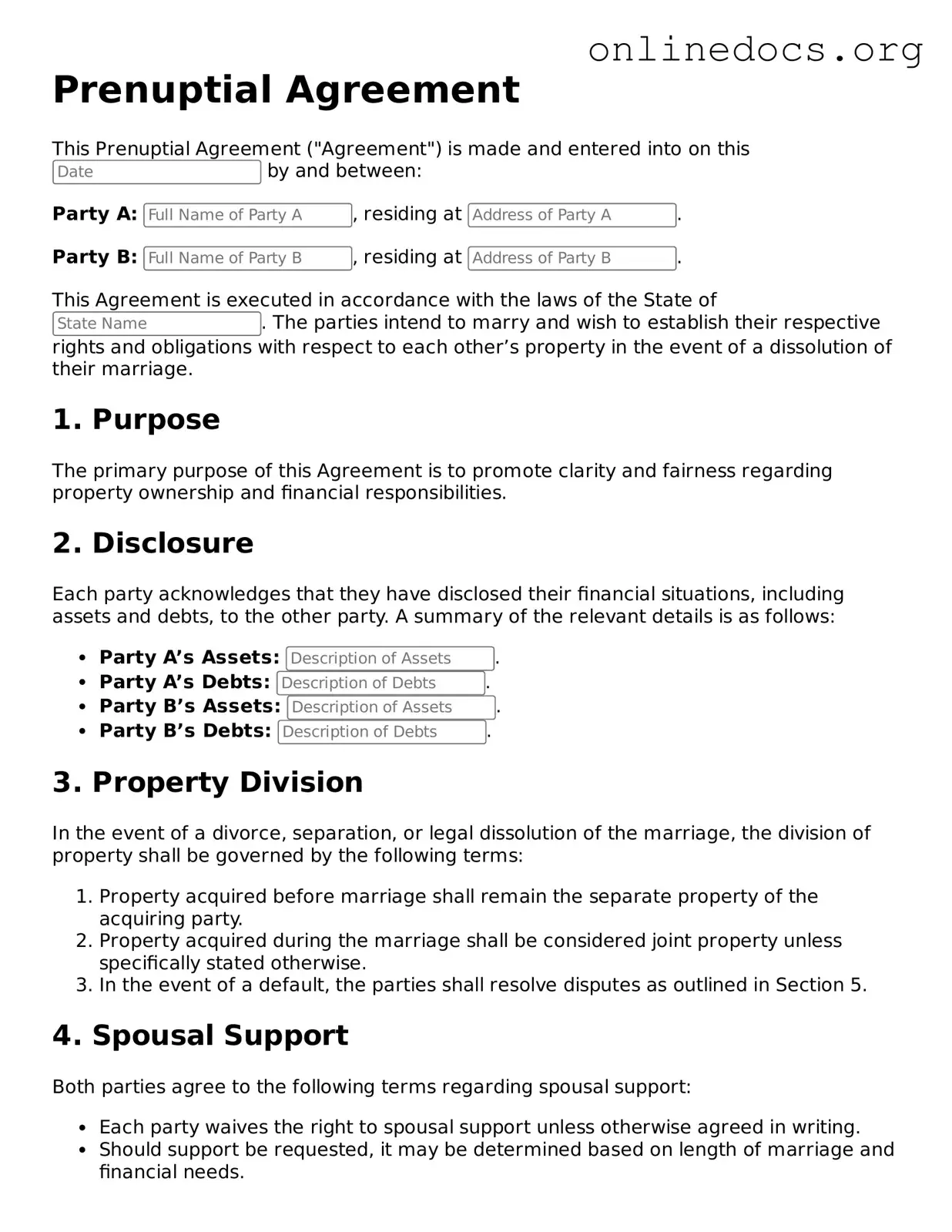A Cohabitation Agreement is similar to a prenuptial agreement in that it outlines the rights and responsibilities of two individuals living together without being married. This document can address issues such as property ownership, financial obligations, and how assets will be divided if the relationship ends. Like a prenuptial agreement, it serves to protect both parties and provide clarity about their expectations, helping to prevent potential disputes in the future.
A Postnuptial Agreement is another document that shares similarities with a prenuptial agreement. This type of agreement is created after a couple gets married and serves to clarify the financial arrangements and property rights of each spouse. Just like a prenuptial agreement, a postnuptial agreement can help mitigate conflicts regarding asset division in the event of divorce or separation. It can also be used to address changes in circumstances, such as the acquisition of new assets or changes in income.
A Separation Agreement is akin to a prenuptial agreement in that it details the terms under which a couple will separate. This document can cover matters like child custody, support, and the division of property. While a prenuptial agreement is created before marriage, a separation agreement is typically drafted when a couple decides to live apart, making it a crucial tool for managing the logistics of a separation while minimizing conflict.
An Employee Handbook is a comprehensive document provided by an employer to its employees. It contains important information on company policies, procedures, and the workplace culture. This handbook serves as a guide for both new and existing employees to understand their rights and responsibilities within the company. To learn more about creating a well-structured guide, visit legalformspdf.com.
An Estate Plan shares a common goal with a prenuptial agreement: to provide clarity and protection regarding assets. An estate plan typically includes documents like wills and trusts, which outline how a person's assets will be distributed after their death. Both prenuptial agreements and estate plans aim to ensure that individual wishes are honored and that potential disputes among heirs or beneficiaries are minimized.
A Will is another document that serves a protective purpose, much like a prenuptial agreement. A will specifies how a person's assets should be distributed upon their death. While prenuptial agreements focus on asset division during a marriage or divorce, wills address distribution after death. Both documents require careful consideration and planning to ensure that individual intentions are clearly articulated and legally binding.
A Business Partnership Agreement can resemble a prenuptial agreement when two individuals enter into a business relationship. This document outlines the roles, responsibilities, and financial contributions of each partner. Like a prenuptial agreement, it aims to prevent disputes by clearly defining expectations and procedures for handling conflicts, ensuring that both parties are on the same page regarding their partnership.
A Non-Disclosure Agreement (NDA) can also be compared to a prenuptial agreement in terms of protecting sensitive information. An NDA is often used in business settings to prevent the sharing of confidential information. Similarly, a prenuptial agreement can include clauses that protect individual financial information and assets from being disclosed during or after a divorce, thereby safeguarding personal interests.
An Investment Agreement is another document that shares similarities with a prenuptial agreement, especially when it involves multiple parties pooling resources. This agreement outlines how investments will be managed, profits shared, and losses handled. Like prenuptial agreements, investment agreements seek to clarify expectations and responsibilities, reducing the likelihood of disputes among investors.
A Child Custody Agreement may also draw parallels to a prenuptial agreement in that both documents aim to provide clear guidelines for the future. A child custody agreement outlines how parents will share responsibilities and decision-making for their children. In both cases, the goal is to establish a framework that minimizes conflict and ensures that all parties understand their rights and obligations.
Finally, a Financial Agreement can be likened to a prenuptial agreement as it addresses the financial rights and obligations of parties involved. This document may include provisions for debt management, income sharing, and asset protection. Both financial agreements and prenuptial agreements are designed to create a clear understanding of financial matters, thereby reducing misunderstandings and potential disputes in the future.
